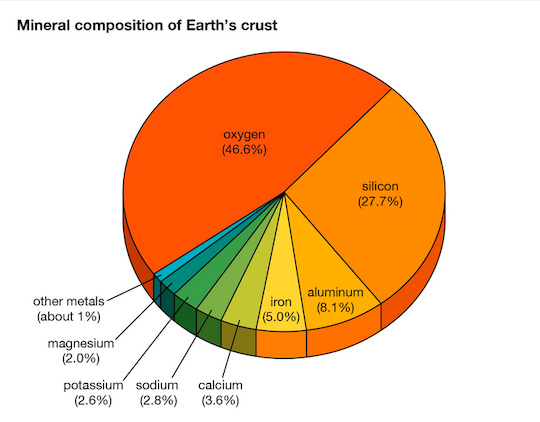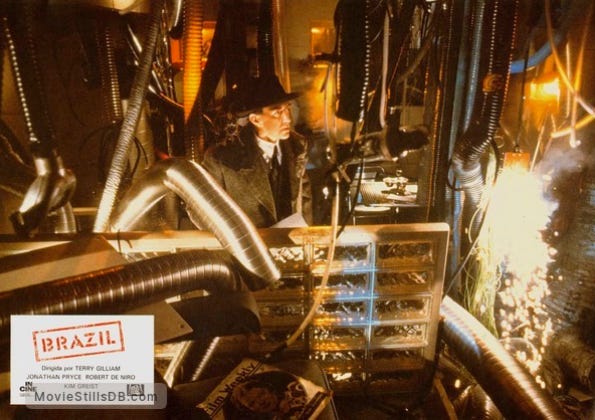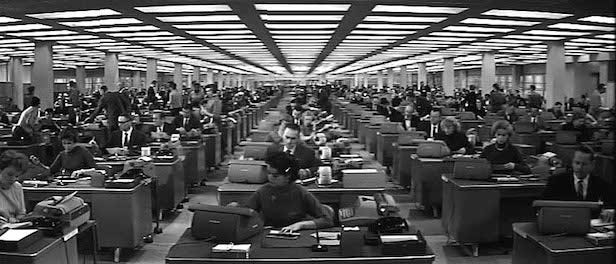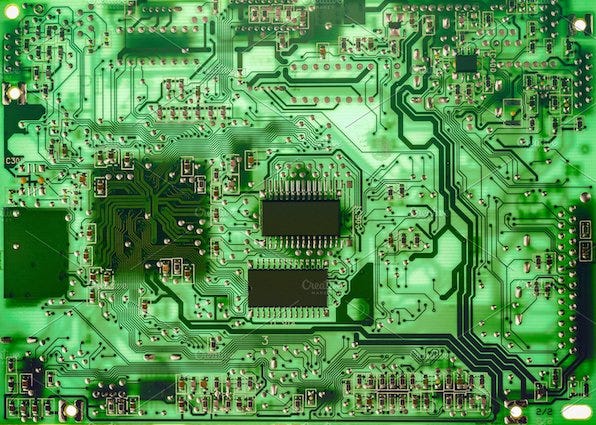Part 1
What is the cure for the reign of Artificial Intelligence as the Globalist’s current favored god?
I propose that “Artistic Intelligence” is the authentic paradigm descriptor for creative human consciousness. Artifice and techno-babble are the parameters for the current trend represented as the corporate bureaucrat’s social control “experiment.” A human being’s natural creative inclination is to operate with a mind wide open, pedal to the metal—on a freeform joy ride. The controller minds cannot tolerate this type of unbridled creative spirit and passion for living. A few articles back I wrote about the idea of Clampdowns vs Creativs—and this present writing attempt is, in a sense, a continuation of a dialog and exploration of our human realm in these technology-smitten times. We might call this period: AI Limerence.
Limerence:
“the state of being infatuated or obsessed with another person—substitute “AI” for “another person”— typically experienced involuntarily and characterized by a strong desire for reciprocation of one's feelings but not primarily for a sexual relationship.”
What if many humans are in love with the idea that technology will rescue us from ourselves? …And consider to what degree we want technology to recognize who we are in the form of AI bots like Siri and Alexa. This brings me back to the realm as depicted in “Blade Runner 2049”—with the companion Joi, and the streets full of holographic projections.
The Emergence of “SMART” (or, the new dumb?)
Steve Jobs thought that the idea of an iPod, and having a huge library of selected music at his fingertips would be superior in consideration of the “analog” cassette’s limitations. The entire premise of computers(or iPods) is based on a binary construct that operates digitally. And yet—a good CD player needs a good D/A converter—meaning the ability to translate a digital signal input as analog output. We might presume that the goal all along of the CD was to replicate an “analog” waveform due to this being the natural state of sound in a natural environment. When one strikes a piano key or strums a guitar chord we get a lovely analog sinusoidal curve that our ears hear as harmonious or dissonant, depending on the array of notes played. Those musicians who are literate re music theory can wax poetic much more than I who have had only a modicum of music theory training. I’m a musical intuitive who is deficient in an academic process versus those musicians who study at Juilliard or Eastman. I just know what I like and what sounds good to me, and it runs the gamut from Punk or Hard Rock to Prokofiev and Beethoven—with Miles Davis and a variety of instrumentalists along the way. When Miles was asked what sort of music he liked, he replied, “good music.” I concur. Some music sounds better than other music, and in an age of much derivative redundancy—original art seems difficult to find in the realm of contemporary musical commerce. At the outset, Steve Jobs’ idea of the iPod seems benign enough from a distance, but upon closer examination, we might wonder how this simple invention brought us into the realm of AI dominance, and the concept that ‘human hybrids’ are essential for humankind’s survival.
Where did this digital transformation truly begin?
Getting back to the distinction and possible analogy between analog and digital sound forms—perhaps we might also include how more recent technological advances are mostly a digital phenomenon. Even our incandescent light bulbs have been replaced by “energy-saving” LED lights. “Energy-Saving” is the crux of the trend as finance and product-development fit hand in glove. Corporate profit schedules and 21st-century monopolies are being fortified.
In my understanding of electronic audio advances, we went from vacuum tubes to solid state as the means to amplify sound—and this was a significant factor in how society arrived in the realm of the micro-chip, integrated circuits, and etched circuit boards. Silicon Valley is called this for a reason. Silicon defines the realm of electronics which defines how products are conceived and manufactured.
Fairchild Industries was one of the early tech companies, founded in 1957. Thomas Wolfe wrote about the tech engineer, Robert Noyce, who is considered one of the primary pioneers behind the eventual creation of the microchip. In Wolfe’s entertaining article on Fairchild Industries, the beginnings of Silicon Valley are outlined and Noyce and Kilby are cited as the inventors who are behind the resulting “chip” boom cycle. Before Kurzweil, Harari, or Schwab ever had the notion of implanting microchips in human brains the early pioneers were simply thinking of building electronic gear. NASA and the DoD also took an interest in these advancements as well.
Photo of Robert Noyce
“America is today in the midst of a great technological revolution. With the advent of the silicon chip, information processing, communications, and the national economy have been strikingly altered. The new technology is changing how we live, how we work, how we think. The revolution didn't just happen; it was engineered by a small number of people, principally Middle Americans, whose horizons were as unlimited as the Iowa sky. collectively, they engineered Tomorrow. Foremost among them is Robert Noyce.” ~Tom Wolfe, Esquire Magazine, December 1983, pp. 346-374.
The gang’s all here-Tech geeks and future millionaires
The photo suggests a “Mad Men” type TV series. The challenge: how to make geeky engineers really interesting without over-dramatizing personas purely for the sake of creating vapid entertainment potential. In the 1960s, campy TV shows were the trend, and the brainy characters ranged from Darrin Stevens—an Ad man and husband to a witch, to the scientist (the “professor”), stuck on an island with a character named Gilligan. Upon reflection— regarding, “Bewitched”, how apt that an advertising exec who conjures ad campaigns to sell consumer products, is married to a witch who casts spells.
Meanwhile, the foundation for the Hi-tech realm and today’s computers was under construction. What many of us didn’t realize at the time was how television programming was setting the tone for future society: corporate white-collar workers vs blue-collar maintenance crews. As we’ve seen, a lack of plumbers and electricians, and HVAC repair technicians has brought us to a reckoning: Will AI and the beastly Machine take care of all our needs?
Duct world
Anyone who’s seen “Brazil”[prod. 1985, dir. Terry Gilliam] will recall the DeNiro character—a renegade duct repairman. The protagonist[Jonathan Pryce as Sam Lowry] cannot possibly fix the air conditioning unit himself, and the corporate state has so much red tape to deal with that one is liable to expire from heat/cold exposure before the problem is ever fixed. Too much red tape and not enough duct tape. Does this sound like something in the news lately,i.e., global energy shortages? Is duct tape the critical detail to consider as a survival essential in the dystopian realm scheduled by the WEF/UN?
Fast Forward to the 1990’s and Ray Kurzweil and his techno-cronies were making the quantum leap to the notion of artificial intelligence running the show here on Earth.
“In 1997 and 1999 [Kurzweil] founded firms that produced software using artificial intelligence for financial analysis and medical training. Kurzweil also explored the possibilities of technology in creating art, founding a company in 1998 that produced software capable of creating paintings and poetry.”
Not only does Kurzweil believe AI can create art that will surpass creative human abilities and imagination—but he also believes that medical needs and vaccines will be produced by AI. In my lexicon—Kurzweil is a proponent of the “Digital-Human.”
The Encyclopedia Brittanica article continues: “His book The Age of Spiritual Machines (1999) presents a vision of the 21st century as a time when computer technology would have advanced far enough to allow machines to operate on a level equivalent to that of the human brain. Computers, he predicted, would make complex decisions, appreciate beauty, and even experience emotions. Moreover, Kurzweil believed that as humans transferred the information in their brains to computers, the distinction between man and machine would become blurred.”
Question: “Siri, which heating duct is malfunctioning?…and is the home-based unit the issue—or is it the central state’s heating system that is broken? …also—where can I buy cheap firewood?”
From Transistors to Transhumans
The etymology of “Trans”—before the universities and media co-opted the word and gave us “transgender.”
trans-
1. a prefix meaning “across,” “through,” occurring orig. in loanwords from Latin, used in particular to form verbs denoting movement or conveyance from place to place (transfer; transmit; transplant) or complete change (transform; transmute), or to form adjectives meaning “crossing,” “on the other side of,” or “going beyond” the place named (transmontane; transnational; trans-Siberian).
2. a prefix used in the names of chemical compounds that are geometric isomers having two identical atoms or groups attached on opposite sides of a molecule divided by a given plane of symmetry. Compare cis- (def. 2).
[< Latin, prefixal use of trāns (preposition) across, through]
tran•sis•tor
(trænˈzɪs tər)
n.
1. a compact solid-state device consisting of a semiconductor with three or more electrodes: performs the primary functions of an electron tube, as amplification, switching, and detection, but uses less power.
2. Also called transis′tor ra′dio. a transistorized radio.
[1945–50; trans (fer) + (res) istor]
~Random House Kernerman Webster's College Dictionary, © 2010
Carbon and Silicon—The Science
“In the simplest case, carbon yields a polymer called poly-acetal, a plastic used in synthetic fibers and equipment. Silicon yields polymeric silicones, which we use to waterproof cloth or lubricate metal and plastic parts.”
“But when carbon oxidizes--or unites with oxygen say, during burning--it becomes the gas carbon dioxide; silicon oxidizes to the solid silicon dioxide, called silica. The fact that silicon oxidizes to a solid is one basic reason as to why it cannot support life…”
“There is one thing silicon can do. Life on earth is predominantly made up of right-hand carbohydrates and left-hand amino acids. Why do they not have the opposite handedness, or both have the same? Many chemists believe that the first "handed" carbon compounds formed in a "soupy" rock pool having a "handed" silica surface. And the handedness of this surface encouraged the creation of those carbon compounds now preferred in Earth's life-forms.”
source: https://www.scientificamerican.com/article/could-silicon-be-the-basi/
Carbon-based units involved in classic herd activity:
Opening shot—Insurance office workers circa, 1960’s— from Billy Wilder’s, “The Apartment”
The Herd Today
As is above so is below—The Grid
Circuit Board (micro)
Los Angeles(macro)
Part II —Truth & Beauty (to be continued…)
A site with a few short Red-Pill videos: https://greatawakening.world/reset1

















